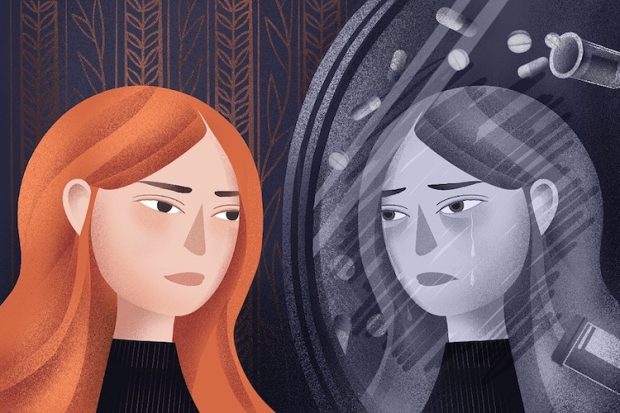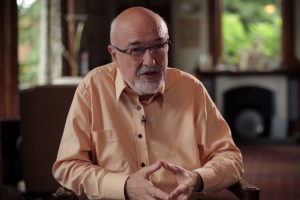Glaciology and Climate Change
Glaciologist Martin Siegert on the history of glacial theory, lake Vostok research and what ice tells us about...
There have been debates for centuries about whether the art has any particular purpose within our society. There have been these arguments that art is just for art’s sake and should just be enjoyed as a pleasurable aesthetic experience, but also what we’ve started to see is a lot of studies and research suggesting that engagement with the arts can have benefits for our health and well-being. One of the challenges from these studies is that many of these over the last few decades have focused on specific interventions, carefully crafted programs where people deliberately take part in new arts activities to try and improve a particular aspect of their health. These have given us fantastic results about mental, physical, cognitive benefits. But one of the things that’s come up repeatedly is that these studies are often quite small in scale, they contain specific groups of people who aren’t necessarily representative of the rest of the population. They only track people over relatively short time spans.
So over the last couple of years I’ve been working with my team looking at a national public data and trying to understand if general arts engagement in our daily lives, not for our well-being and our health but just for our general enjoyments, might also be having these health benefits. The data we’ve been working with in particular are cohort studies. These are datasets that track the thousands of people, often from birth, every few years of their lives collecting thousands of variables on their mental health, physical health, education, their backgrounds, what they do in their lives, their finances. Many of these datasets, lots of which are run at University College London, actually contain questions on arts and cultural engagement which means that we can track nationally representative samples of people over decades and look at whether the types of arts activities they engage in over their lifespan have got these long-term benefits for their health.

We’ve had a few really exciting findings from this over the last few years. One of the things we wanted to look at immediately was mental health because there are so many projects that have been looking at how the arts can help people with mental illness to recover or manage their symptoms. But we also wanted to say, could the arts actually be helping to prevent the onset of mental illness in the first place? In other words, if you take part in arts activities on a regular basis, could this actually be helping to reduce your risk of developing a mental illness in your life?
So we’ve run some analyses looking particularly at older adults, those over the age of 50, and whether those who engage more in arts activities are less likely to develop depression, and we found this is indeed the case. Now, of course, what you could say is that people who engage in the arts are probably just healthier and wealthier in the first place, but what we’re able to do with these analyses is because we’ve got such rich variables on all the other aspects of people’s lives we can model into our statistical analyses all these other factors that could be potentially confounding the relationship. For example, if we’re looking at arts and depression, we can model things like socioeconomic status, gender, education, whether people are working, whether they have any other health conditions and what their physical activity is, whether they see friends, whether they’re involved in other social or community activities. What we’re looking for is, do we still see a link between arts engagement and depression independent of all these other factors?
And that’s indeed what our analyses have been showing. We’ve been looking at some of these as longitudinal analyses looking at where the people develop depression. We’ve also run other analyses where we’ve taken people who have depression and we found them a matched pair, almost like a twin, who doesn’t have depression but who is almost identical in all the other factors in their lives. And again, when we use this approach we also find that people are less likely to develop depression if they’re engaged in the arts.
Of course, we have to consider that arts engagement is often time-varying, so we expect people to do more arts some years, do less the next year depending on what else is going on in their lives. And we also know that mental health varies over time as well as do many of the other factors in our lives. So we’ve also been able to undertake analyses where we can track all of these different factors as they change together over time. And again, we’re seeing this recurring theme here that there is this link between arts engagement and depression.
We’ve also recently started simulating intervention studies. This is really interesting when we’re considering things like arts on prescription because running large-scale randomized control trials of these topics can be really expensive to do, it can take many years to collect data. So what we can do with cohort data is we can simulate the studies. Now, we can’t be completely sure that what we’re seeing is what we do associate in the experiments but it can give us a bit of an idea, and this can help to reduce the risk when we’re then designing new experiments.
We’ve also looked at other populations such as children and found that children who engage in the arts in primary schools are likely to have higher levels of self-esteem as they enter adolescence, and self-esteem is very much linked in with child mental health. What we see particularly is that if parents engage in these activities with their children, the children get an even stronger boost in their self-esteem, so it’s a really important activity that parents are engaging with as families with their kids. We also find that it’s not just the self-esteem; we actually find that there are other benefits as well. We find that children who engage in the arts are less likely to develop social adjustment problems as teenagers. For example, they are less likely to have problems with their peers, less likely to have problems with their teachers and other adults in their lives, they’re more likely to have a good social adjustment (what we call pro-social behaviours), and we also find they’re less likely to develop depression just like we see for older adults, and they’re actually also more likely to live healthier lives. So children, for example, who read fiction pretty much every day (this is something we often see in young children as they’ve got the time to read lots of books) actually have much better health behaviours. So we find that they are less likely to try drugs, they’re less likely to try smoking, and they’re more likely to eat fruit and vegetables as they enter adolescence.
What’s really intriguing here is that we find that ability doesn’t seem to matter: what seems to be important is doing the activity, you don’t necessarily have to be very good at it. It’s a taking part that counts. For all of these analyses, again, we’re seeing these independent of all these other factors in children’s lives. This is suggesting that arts aren’t just an artefact of higher socioeconomic status, but the arts engage in itself seems to be what’s important.
What we found is those cultural engagements are associated with a lower risk of dementia. What’s more, if we then take account of death, which is an important factor, because many people die with dementia before it actually develops into anything that’s a bigger issue for them, we actually still find these analyses. We’ve also gone even one step further and considered the risk of developing dementia or dying with a high probability of dementia, and again cultural engagement is protective against these too.
We’ve also been doing analyses looking more at physical health, and we know that many physical health conditions, particularly ones we develop in order age, can be a combination of physical and mental in their origin. So we’ve done analyses, for example, looking at chronic pain. Now, it’s been shown before that vigorous physical activity can actually be protective against developing chronic pain in older age, but chronic pain is something, again, where we know that there are psychological components too. So what we found is that people who engage in arts and cultural activities also have a lower risk of developing chronic pain in older age, perhaps because these activities are helping to reduce sedentary behaviours: they are getting people up and out of the house, going to do things like singing, or dancing, or gardening. But they’re also providing that social stimulation, that mental health, well-being benefits, emotional expression, stress reduction, all of which can be protective against developing chronic pain.

We’ve also done similar analyses looking at things like frailty which is comprised of multiple different components including mental health, including maintaining active lifestyles. Again, we’re finding the same kind of pattern here: the arts engagement is protective against developing frailty and even once you’ve developed frailty it can be protective against having a faster rate of cognitive decline.
So what this is showing us is that arts and cultural engagement are linked in at population levels in representative samples with better mental, physical and cognitive outcomes, both in terms of preventing these but also helping to have better trajectories. On its own this doesn’t provide the full picture and of course, we can never be completely sure about causality when we’re using observational cohort data, but if we’re starting to consider all the different types of evidence that exist (for example, randomized control trials, ethnographic or qualitative studies, biological lab-based studies) alongside these cohort data what’s really exciting is we’re seeing really similar patterns occurring across all of these. What this suggests is that this isn’t just an artefact of one particular methodological approach but this could actually be genuine findings here that arts engagement is protective for health. So when we return to this argument about is it just arts for art’s sake, well, the arts certainly are enjoyable just for their own sake and we should make sure that we keep engaging for the pure pleasure of it as well, but it’s actually really promising and comforting to know that the very things in our lives that we can find so pleasurable, like the arts engagement, can also be having these short and long-term benefits for health.

Glaciologist Martin Siegert on the history of glacial theory, lake Vostok research and what ice tells us about...

Neuropsychologist Chris Frith on mirror neurons, perception of biological motion, and mentalizing

Psychoneuroimmunologist Daisy Fancourt on the effect arts have on our well-being, the correlation between read...